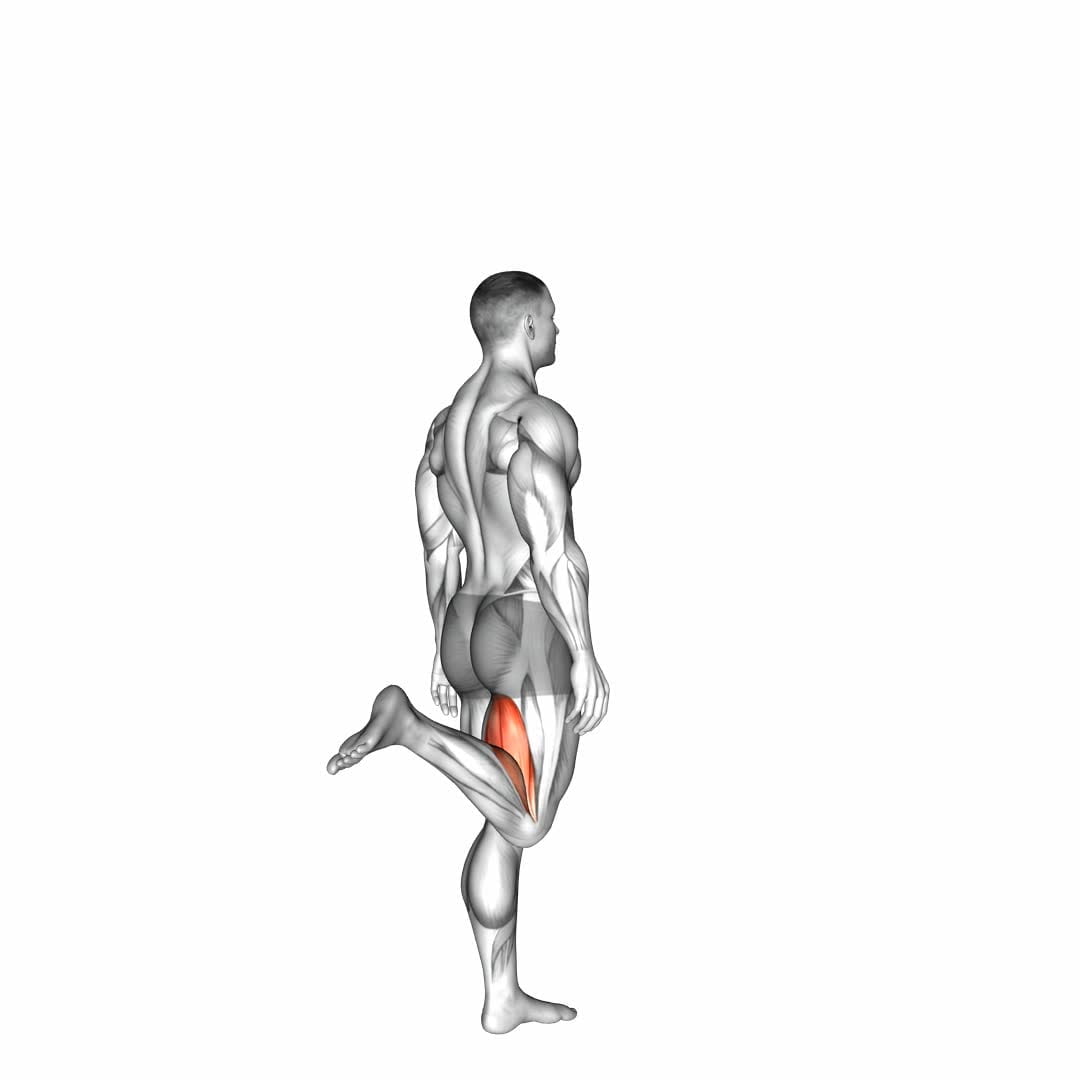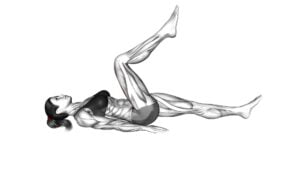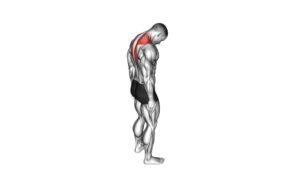Knee – Flexion – Video Exercise Guide & Tips

Are you struggling with limited knee flexion? This article is here to help!
Watch This Exercise Video
In this comprehensive guide, you'll find video exercises and valuable tips to improve your knee flexion.
Discover the importance of knee flexion, common causes of limited range, and the best exercises to strengthen and increase flexibility.
Whether you're a beginner or advanced fitness enthusiast, we've got you covered with proper form and technique advice.
Get ready to enhance your knee flexion and conquer your workouts!
Key Takeaways
- Maintaining proper knee flexion is important for preventing stiffness and improving mobility.
- Regularly engaging in exercises that promote knee flexion can increase the range of motion in the knees and strengthen the surrounding muscles for stability and support.
- Limited knee flexion can be caused by knee joint inflammation, tight muscles and tendons, and scar tissue formation after injury or surgery.
- To improve knee flexion, incorporate exercises that target the muscles and tendons surrounding the knee joint, start with gentle exercises and gradually increase intensity, and consult with a healthcare professional before starting any new exercise program.
Importance of Knee Flexion
You should prioritize maintaining proper knee flexion to prevent stiffness and improve overall mobility. The benefits of knee flexion are numerous and essential for the health and functionality of your knees. By regularly engaging in exercises that promote knee flexion, you can increase the range of motion in your knees, allowing for easier movement and reduced risk of injury. Additionally, maintaining proper knee flexion helps to strengthen the muscles surrounding the knee joint, providing stability and support.
To enhance knee flexion, incorporating specific stretches into your routine can be highly beneficial. One effective stretch is the standing hamstring stretch, where you stand with one foot elevated on a surface and lean forward, reaching towards your toes. This stretch targets the hamstrings, which play a significant role in knee flexion. Another useful stretch is the seated knee flexion stretch, where you sit on the edge of a chair and slowly extend one leg out in front of you, gently bending and straightening the knee. This stretch specifically targets the quadriceps muscles, which are crucial for knee flexion.
In conclusion, prioritizing proper knee flexion through targeted exercises and stretches can provide numerous benefits, including improved mobility and reduced stiffness. By incorporating these exercises into your routine, you can maintain healthy knee function and prevent limitations in your range of motion.
Now, let's explore the common causes of limited knee flexion.
Common Causes of Limited Knee Flexion
Limited knee flexion can be caused by various factors that restrict the range of motion in your knees. One of the common causes of knee stiffness is knee joint inflammation, also known as arthritis. Arthritis can result in the formation of bone spurs or the breakdown of the cartilage, leading to limited knee flexion.
Another cause is tight muscles and tendons surrounding the knee joint, such as the quadriceps and hamstrings. When these muscles are tight, they can restrict the movement of the knee, making it difficult to fully flex.
Additionally, scar tissue formation after a knee injury or surgery can also contribute to limited knee flexion.
To address limited knee flexion, it's important to seek proper treatment. Physical therapy is often recommended to strengthen the muscles around the knee joint and improve flexibility. This may involve exercises to stretch and lengthen the tight muscles, as well as strengthening exercises to support the knee.
In some cases, nonsteroidal anti-inflammatory drugs (NSAIDs) may be prescribed to reduce inflammation and relieve pain. If conservative treatments are ineffective, surgical interventions such as arthroscopy or joint replacement may be considered.
In the next section, we'll explore the best exercises for improving knee flexion and increasing the range of motion in your knees.
Best Exercises for Improving Knee Flexion
To improve knee flexion, it's important to incorporate exercises that target the muscles and tendons surrounding the knee joint. Strengthening exercises and stretching techniques can help increase the range of motion in your knee and improve your overall flexibility.
One effective strengthening exercise for knee flexion is the seated knee flexion exercise. Sit on a chair with your feet flat on the ground. Slowly lift one foot off the ground and bring your heel towards your buttocks. Hold this position for a few seconds and then slowly lower your foot back down. Repeat this exercise for 10-15 repetitions on each leg.
Another beneficial exercise for improving knee flexion is the quadriceps stretch. Stand upright and hold onto a wall or chair for support. Bend one knee and grab your ankle with your hand. Gently pull your heel towards your buttocks until you feel a stretch in the front of your thigh. Hold this position for 20-30 seconds and then switch to the other leg.
Remember to start with gentle exercises and gradually increase the intensity and duration as your knee flexion improves. It's essential to listen to your body and not push yourself too hard, as this could lead to injury. Consult with a healthcare professional before starting any new exercise program, especially if you have a history of knee problems.
Tips for Proper Form and Technique
Proper form and technique are essential for maximizing the benefits of knee flexion exercises. When performing knee flexion exercises, it's crucial to maintain proper technique to prevent injury and ensure effective muscle engagement. One common mistake is allowing the knees to cave inwards during the movement. To avoid this, focus on keeping your knees aligned with your toes throughout the exercise.
Additionally, make sure to maintain a stable core and avoid rounding your back. Another mistake to watch out for is rushing through the exercise. Take your time and perform each repetition with control, focusing on the muscles being targeted. Remember to breathe steadily and avoid holding your breath.
Maintaining proper form and technique won't only help you achieve better results but also minimize the risk of injury. Now that you have a good understanding of the proper technique, it's time to explore progression and modifications for all fitness levels.
Progression and Modifications for All Fitness Levels
To progress and modify knee flexion exercises for all fitness levels, you can incorporate variations that challenge your muscles in different ways. Fitness modifications are important to ensure that individuals of all knee flexibility levels can safely and effectively perform these exercises. Whether you're a beginner or an advanced exerciser, there are several options available to help you progress and modify your knee flexion exercises.
For those with limited knee flexibility, starting with a seated knee flexion exercise can be beneficial. Sit on a chair with your feet flat on the floor and slowly lift one leg, bending your knee as much as you can comfortably. Hold for a few seconds and then lower your leg back down. As your knee flexibility improves, you can gradually increase the range of motion by lifting your leg higher.
For individuals with greater knee flexibility, a standing knee flexion exercise can provide a greater challenge. Stand with your feet hip-width apart and slowly lift one leg, bending your knee as much as you can comfortably. Hold for a few seconds and then lower your leg back down. To further increase the intensity, you can add resistance by using ankle weights or resistance bands.
Remember to listen to your body and only progress to more challenging variations when you feel ready. By incorporating these fitness modifications, individuals of all knee flexibility levels can effectively improve their strength and flexibility.
Frequently Asked Questions
Can Limited Knee Flexion Be Completely Cured Through Exercises Alone?
Limited knee flexion can sometimes be improved through exercises alone, but it's important to note that the effectiveness of exercise may vary depending on the underlying cause of the limitation.
Alternative therapies like physical therapy and stretching exercises can be helpful in increasing knee flexion.
However, in some cases, surgical interventions may be necessary to completely cure limited knee flexion.
It's best to consult with a healthcare professional to determine the most appropriate treatment plan for your specific situation.
What Are Some Alternative Treatments for Limited Knee Flexion Besides Exercise?
Alternative treatments for limited knee flexion, besides exercise, include physical therapy techniques and joint mobilization techniques. These treatments can help improve your knee flexibility and range of motion.
Physical therapy techniques may involve targeted exercises, stretching, and manual therapy. Joint mobilization techniques involve skilled manipulation of the knee joint to improve its movement.
These alternative treatments can be effective in addressing limited knee flexion and should be considered in addition to exercise for optimal results.
How Long Does It Typically Take to See Improvements in Knee Flexion Through Exercise?
Improving knee flexion through exercise can vary in terms of the timeline for seeing improvements. The effectiveness of the exercises and the individual's dedication to the regimen play a significant role. It's important to note that everyone's progress is unique, so it's difficult to provide a specific timeline.
However, with consistent and proper exercise techniques, many individuals start to notice improvements in knee flexion within a few weeks. Remember, patience and persistence are key to achieving the desired results.
Are There Any Specific Exercises That Should Be Avoided for Individuals With Limited Knee Flexion?
When dealing with limited knee flexion, it's important to know which exercises to avoid. Certain movements can put unnecessary strain on your knees and potentially worsen your condition. By understanding the exercises that should be avoided, you can better manage your limited knee flexion and prevent further injury.
It's crucial to consult with a healthcare professional or physical therapist who can guide you in creating a safe and effective exercise routine tailored to your specific needs.
Can Limited Knee Flexion Lead to Other Complications or Injuries in the Long Term?
Limited knee flexion can lead to various complications and injuries in the long term. When you have limited knee flexion, it can put excessive stress on other joints and muscles, such as the hips and lower back. Over time, this can lead to pain, instability, and even degenerative changes in these areas.
Additionally, limited knee flexion can affect your ability to perform daily activities and participate in sports or physical activities. Seeking appropriate treatment and exercises can help prevent these long-term effects.
Conclusion
In conclusion, improving knee flexion is crucial for maintaining mobility and preventing injuries. By incorporating the best exercises for knee flexion into your fitness routine, you can effectively increase your range of motion and alleviate common limitations.
Remember to focus on proper form and technique to maximize the benefits of these exercises. Regardless of your fitness level, progression and modifications can be made to suit your individual needs.
Start incorporating these exercises today and experience the positive impact on your knee flexibility.

Author
Years ago, the spark of my life’s passion ignited in my mind the moment I stepped into the local gym for the first time. The inaugural bead of perspiration, the initial endeavor, the very first surge of endorphins, and a sense of pride that washed over me post-workout marked the beginning of my deep-seated interest in strength sports, fitness, and sports nutrition. This very curiosity blossomed rapidly into a profound fascination, propelling me to earn a Master’s degree in Physical Education from the Academy of Physical Education in Krakow, followed by a Sports Manager diploma from the Jagiellonian University. My journey of growth led me to gain more specialized qualifications, such as being a certified personal trainer with a focus on sports dietetics, a lifeguard, and an instructor for wellness and corrective gymnastics. Theoretical knowledge paired seamlessly with practical experience, reinforcing my belief that the transformation of individuals under my guidance was also a reflection of my personal growth. This belief holds true even today. Each day, I strive to push the boundaries and explore new realms. These realms gently elevate me to greater heights. The unique combination of passion for my field and the continuous quest for growth fuels my drive to break new ground.







